20 Wedding Ceremony Order Ideas for a Flawless Celebration
Planning a wedding requires structure, and nothing defines the flow of the day more than the Wedding Ceremony Order. Couples often wonder how to balance tradition with personal touches, making each moment meaningful while ensuring everything unfolds smoothly. From the processional to the final exit, the sequence matters for both logistics and emotional impact. A well-thought-out wedding ceremony order guides guests through the experience, builds anticipation, and ensures memories last a lifetime.
Below are 20 detailed ideas that help shape a wedding ceremony order, giving you inspiration to design a sequence that feels authentic, stylish, and unforgettable.
Arrival and Seating of Guests
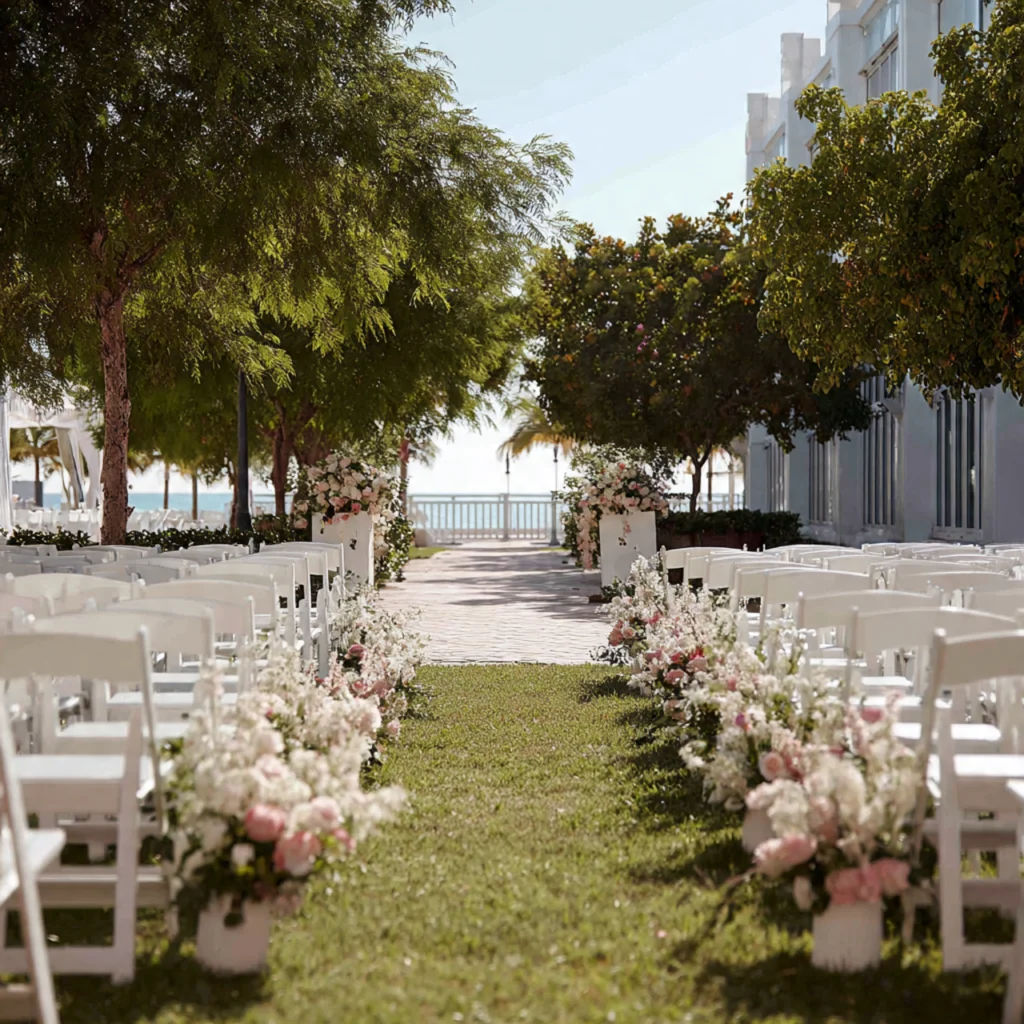
The wedding ceremony order begins with guests arriving and being seated. This sets the tone, as the atmosphere starts to build before the couple appears. Traditionally, ushers escort guests to their seats, ensuring the immediate family is placed in the front rows. For a modern twist, some couples opt for free seating, encouraging friends and relatives to mingle before the ceremony starts.
Music plays a vital role during this stage. Choosing light instrumentals or love ballads creates warmth as guests settle in. A welcome drink station or program handouts can add comfort and clarity. This simple yet thoughtful touch reassures attendees and sets expectations about the flow of events ahead.
Processional Music

Music marks the beginning of the formal wedding ceremony order. The choice of song creates a mood that lingers throughout the ceremony. Whether opting for classical tunes like Pachelbel’s Canon in D or modern favorites, the melody signals the transition from gathering to solemn celebration.
Instrumental quartets, live singers, or even pre-recorded tracks can be used, depending on the couple’s style. The processional music should build anticipation but also reflect the personalities of those walking down the aisle. It creates one of the first emotional peaks of the day.
Groom’s Entrance

The groom’s entrance is a pivotal moment in the wedding ceremony order. Some couples prefer the groom to quietly enter from the side with the officiant, while others make it dramatic by having him walk down the aisle. Both options bring focus to the groom and highlight his role in the ceremony.
Family traditions may influence this choice. For instance, in some cultures, the groom is escorted by his parents. This small adjustment not only honors family bonds but also sets a tone of togetherness before the bride’s arrival.
Bridal Party Procession
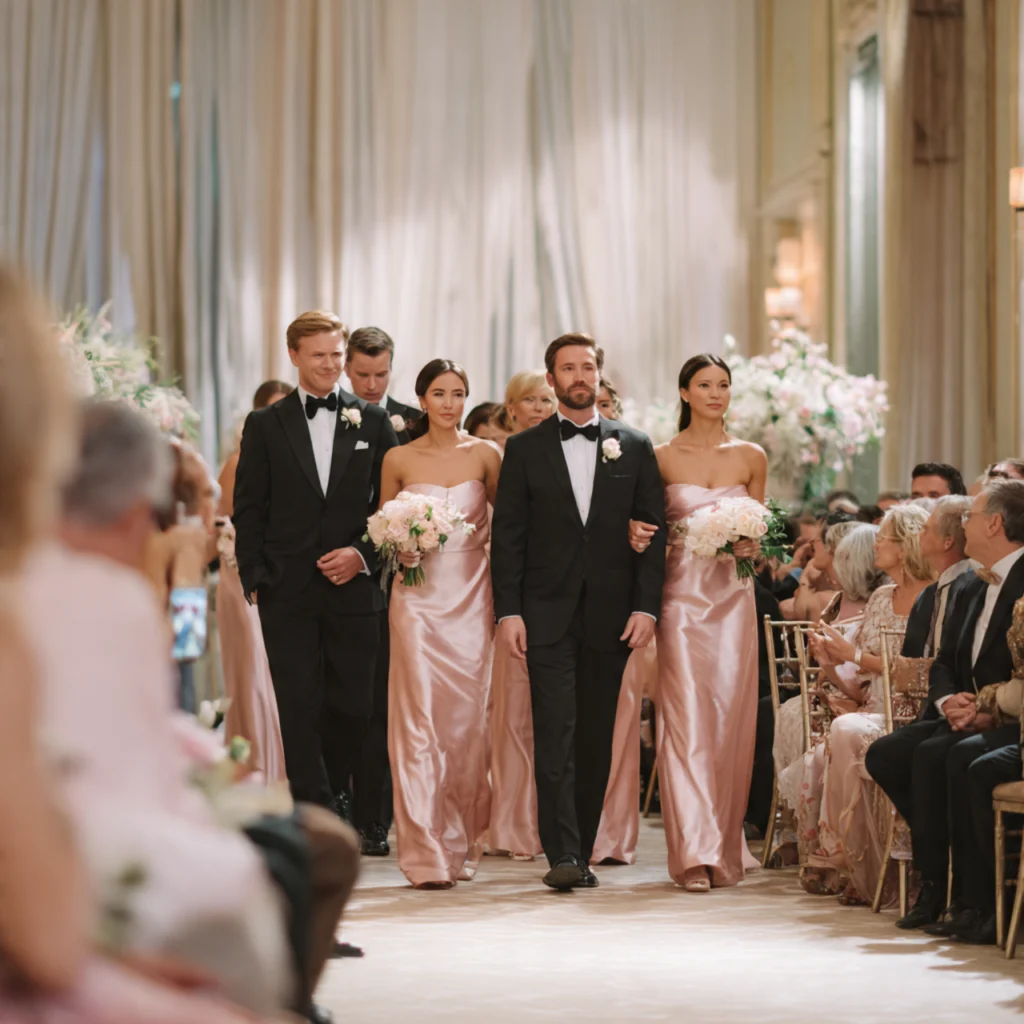
The bridal party procession establishes rhythm and symmetry within the wedding ceremony order. Bridesmaids and groomsmen usually pair up, walking slowly toward the altar. Each step builds anticipation, with flower girls and ring bearers often bringing a playful charm.
Careful planning of spacing and timing ensures elegance rather than chaos. This is also where creative styling comes into play—coordinated outfits, floral arrangements, or thematic cues can make the procession visually striking and memorable for all attendees.
Bride’s Entrance

The bride’s entrance is the most anticipated part of the wedding ceremony order. As the music swells, guests rise to honor her walk. This moment symbolizes not only her arrival but also the transition from single life to a shared future.
Traditionally, the bride is escorted by her father, though modern weddings have expanded this role to include both parents, siblings, or even solo walks. Personalizing this entrance adds meaning, showing respect for relationships and independence.
Giving Away the Bride

Giving away the bride is a classic step in the wedding ceremony order. Though rooted in tradition, it has evolved to symbolize family support rather than ownership. The gesture can be adapted to suit modern values, often accompanied by a hug or blessing.
Couples may choose to honor multiple family members by involving parents from both sides. This adaptation creates balance, ensuring everyone feels included. Such gestures reinforce unity at the start of the ceremony.
Opening Remarks by Officiant

The officiant’s opening words set the emotional and spiritual tone of the wedding ceremony order. They may include a welcome, acknowledgment of family and friends, and a brief reflection on love and commitment. These remarks ground the ceremony, preparing everyone for what’s to follow.
Some couples opt for religious verses, while others prefer secular reflections or poetry. The key is authenticity, making sure the opening aligns with the couple’s values. This moment reminds attendees that they are not just witnesses but participants in a meaningful occasion.
Readings and Poems
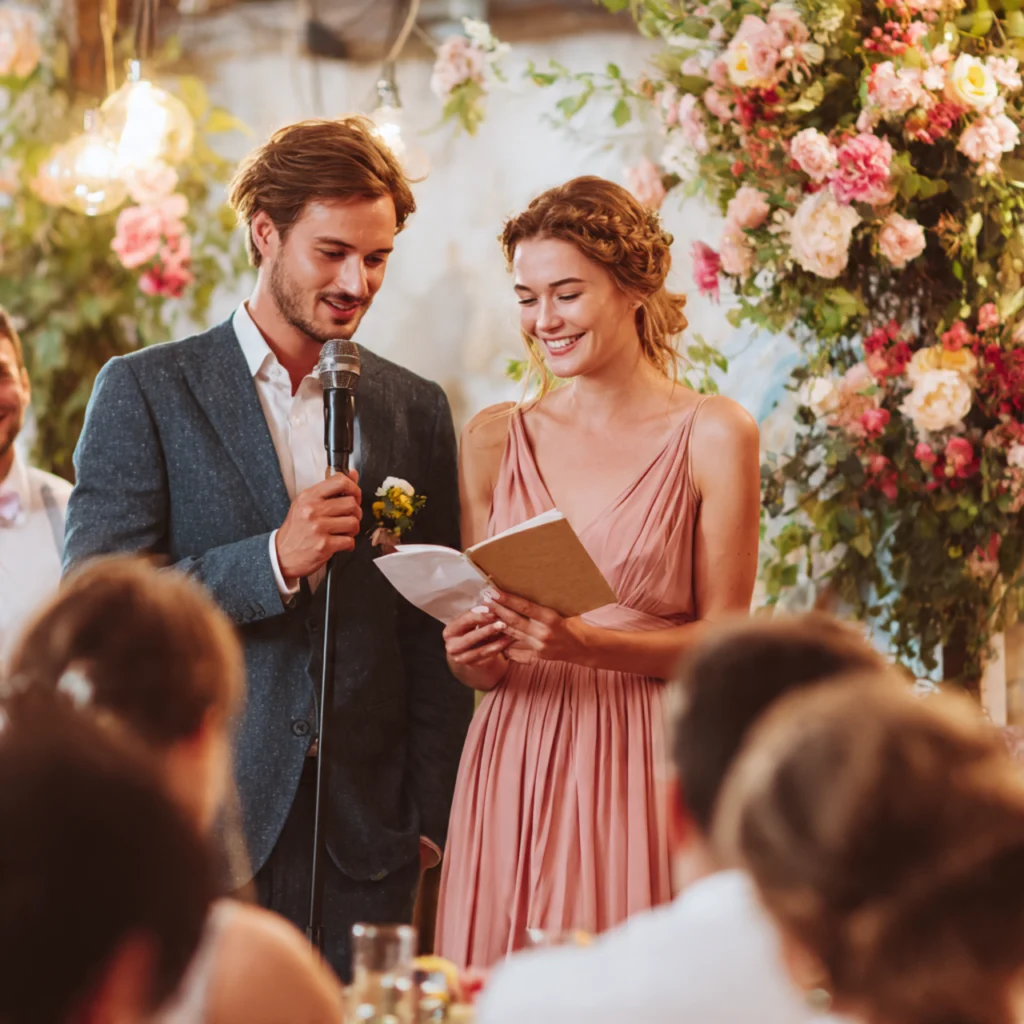
Including readings or poems adds depth and personalization to the wedding ceremony order. Friends or family members may be invited to read passages that hold special meaning. This not only honors loved ones but also breaks up the officiant’s role, adding variety.
Selections may come from sacred texts, literature, or contemporary works. Couples often choose pieces that mirror their love story or highlight shared values. This element enriches the ceremony, giving it a unique voice.
Exchange of Vows
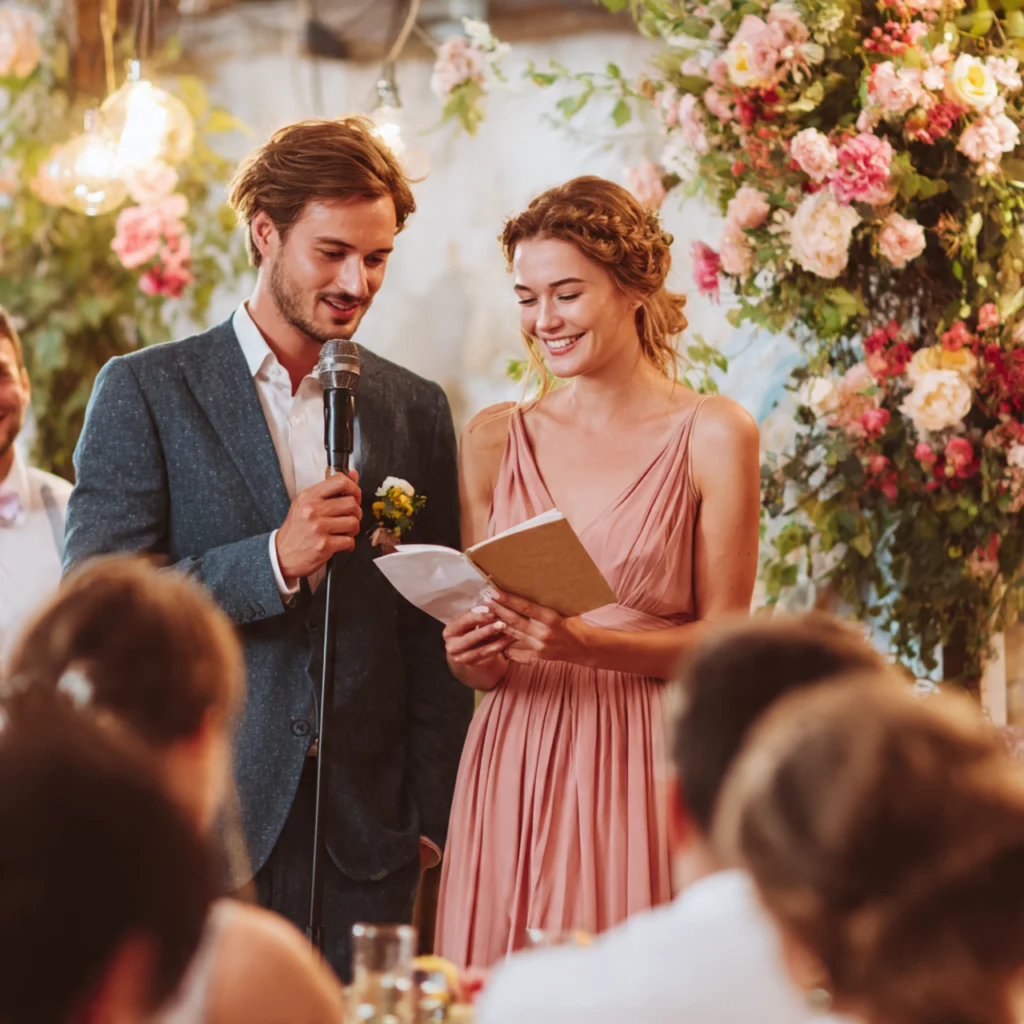
The exchange of vows is the emotional heart of the wedding ceremony order. Couples declare their promises, articulating the foundation of their marriage. Whether traditional or self-written, vows bring intimacy and authenticity.
Some choose humorous touches, while others stay solemn and poetic. The key is honesty—words that reflect the relationship rather than rehearsed lines. This moment often brings tears, laughter, and applause, anchoring the ceremony with emotional resonance.
Exchange of Rings

The exchange of rings symbolizes eternal love within the wedding ceremony order. Rings serve as physical reminders of vows, creating a tangible connection to the promises made. Couples may choose classic bands or custom designs that carry personal meaning.
The officiant often speaks about the symbolism before rings are placed. This ritual, though brief, adds weight and continuity to the ceremony. Its simplicity highlights the beauty of commitment.
Unity Ceremony
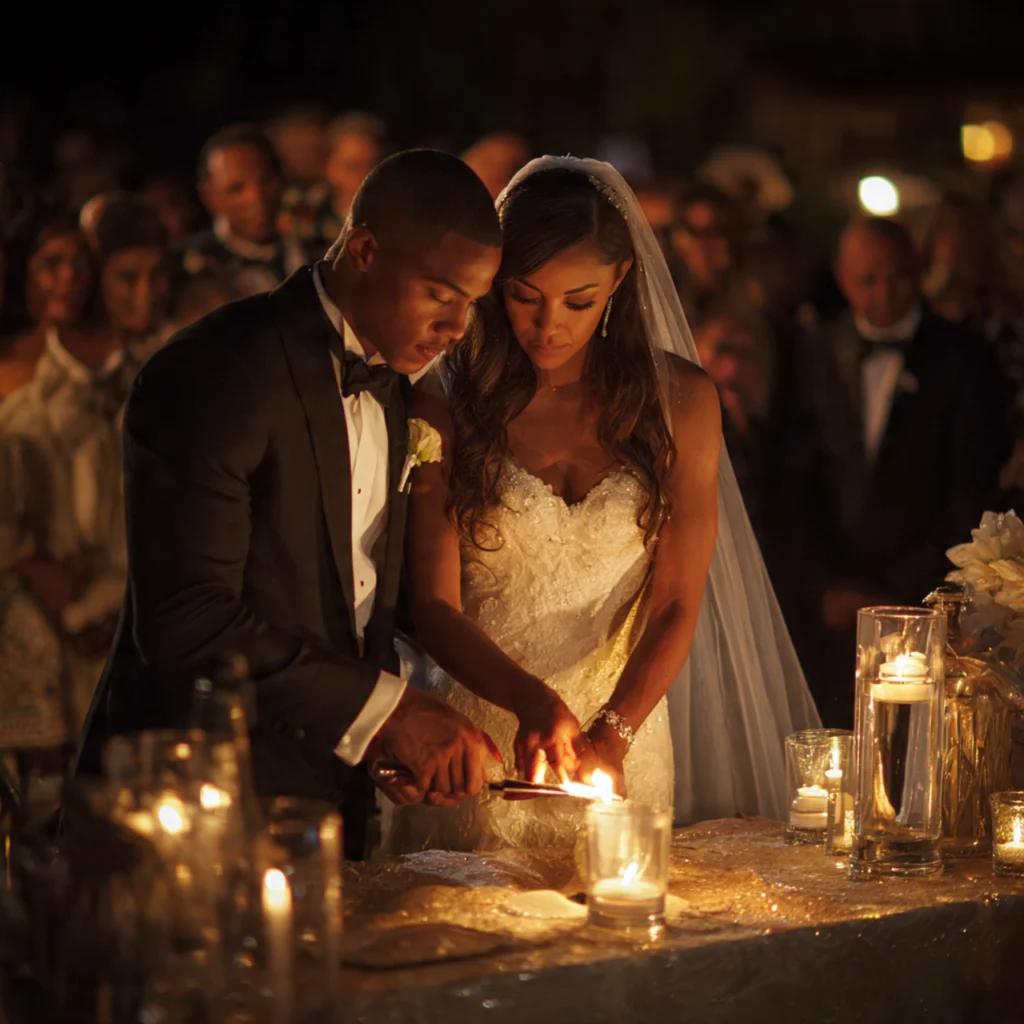
Some couples include a unity ritual within the wedding ceremony order. Options range from lighting a unity candle to blending sand or planting a tree together. These symbolic acts represent the merging of lives and families.
Cultural variations can add richness. For example, handfasting or wine blending ceremonies create visual storytelling. The unity ceremony not only engages guests but also adds another personal layer to the occasion.
Pronouncement of Marriage

The pronouncement of marriage is the official pivot in the wedding ceremony order. It is the moment when the officiant declares the couple legally and spiritually joined. This declaration often draws cheers, applause, and joyful emotions.
Personalized pronouncements, where the officiant references unique aspects of the couple’s story, amplify the significance. This brief yet powerful moment marks the shift from ceremony to celebration.
First Kiss

The first kiss cements the wedding ceremony order with joy and intimacy. This public expression of love is often the highlight of the day for guests and photographers alike. Couples may opt for a sweet, quick kiss or a dramatic embrace.
Timing is key, as this moment often blends seamlessly with the pronouncement. It provides closure to the vows and opens the door to the festivities ahead. The first kiss embodies love, sealing promises in a visible and memorable way.
Signing of the Register

Legal documentation plays a quiet yet essential role in the wedding ceremony order. The signing of the register ensures the union is recognized by law. This can be done privately or in front of guests, depending on tradition and preference.
Some couples use this opportunity for photo sessions, adding a relaxed moment amid the formality. It also allows guests to enjoy background music or readings, keeping them engaged while the paperwork is completed.
Final Blessing or Closing Words

The officiant’s closing remarks offer closure within the wedding ceremony order. This may involve a blessing, prayer, or motivational reflection. It leaves attendees with words of wisdom or encouragement for the couple’s journey.
Couples may choose religious, spiritual, or entirely secular messages. Regardless of tone, the closing words tie together the ceremony’s themes of love, unity, and commitment, leaving everyone inspired.
Recessional Music

The recessional shifts energy toward celebration in the wedding ceremony order. Upbeat music accompanies the couple as they walk back down the aisle together. Guests often clap, cheer, or shower petals, enhancing the joyous mood.
Choosing lively songs signals the transition from solemn vows to festive reception. Popular options include contemporary love songs or lively classical pieces, ensuring the ceremony ends on a high note.
Couple’s Exit
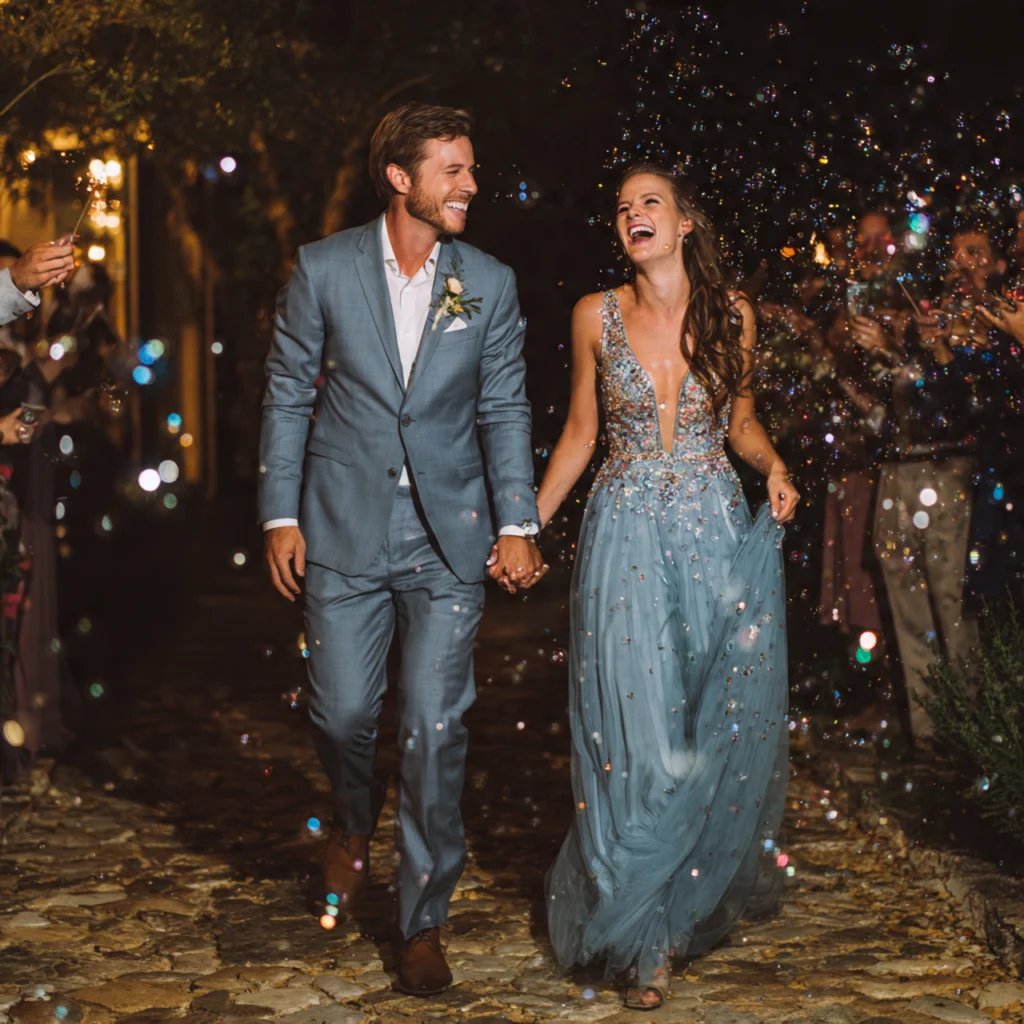
The couple’s exit follows immediately after the recessional. This symbolic walk signifies stepping into a new life together. Some couples enhance this moment with confetti tosses, bubbles, or even sparklers, creating dramatic visuals.
Guests are often encouraged to participate, making the exit communal rather than solitary. It serves as the final image of the ceremony, blending joy with closure.
Receiving Line

The receiving line provides couples with a structured way to greet and thank guests after the wedding ceremony order concludes. Though less common today, it ensures personal interaction with everyone present.
This practice can be adapted into casual mingling or combined with cocktail hour. Regardless of form, acknowledging guests adds gratitude and hospitality, ensuring everyone feels valued.
Transition to Reception
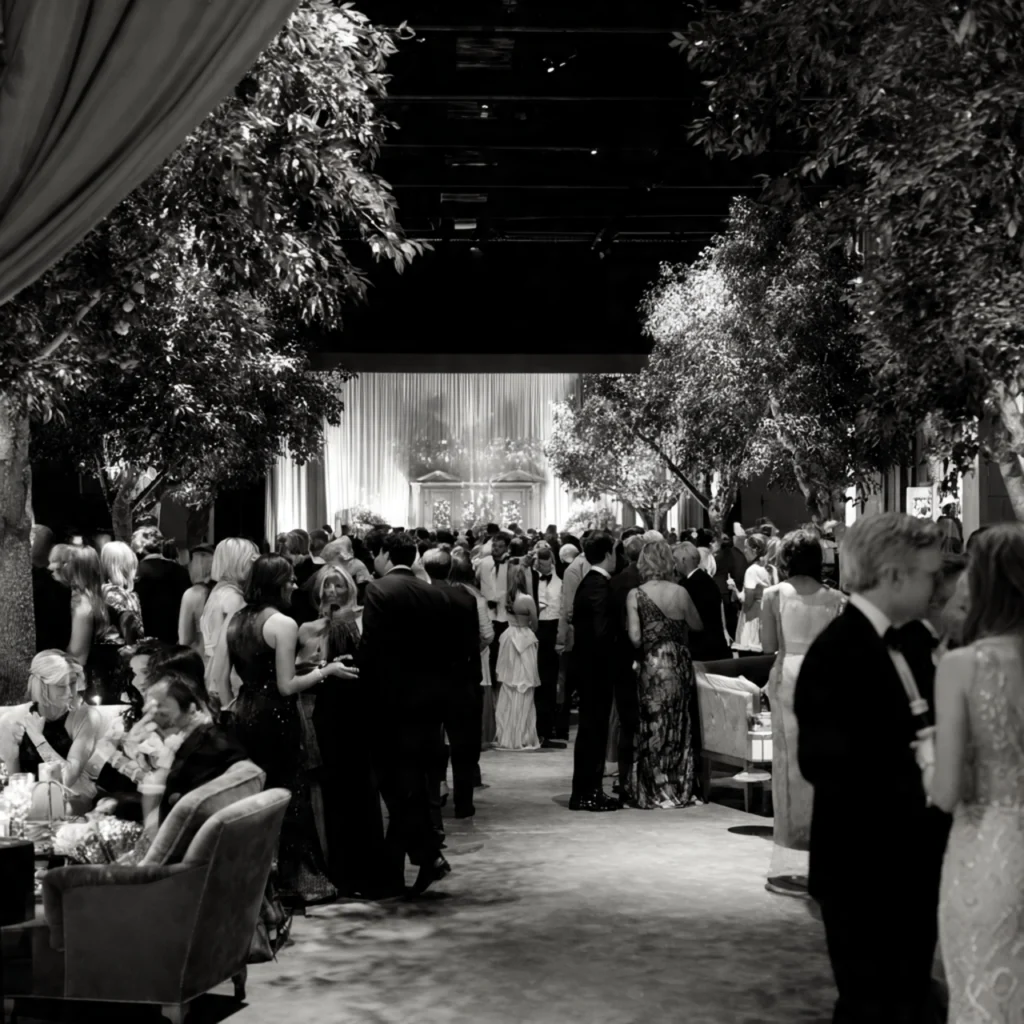
The wedding ceremony order ends with the transition to the reception. This step bridges solemn commitment with joyful festivity. Couples may arrange for music, refreshments, or entertainment to ease this shift.
Transportation may also be involved, whether moving guests from a church to a hall or simply guiding them into a new space. Clear communication and thoughtful planning make the transition smooth, ensuring no loss of energy or excitement.
Post-Ceremony Photos
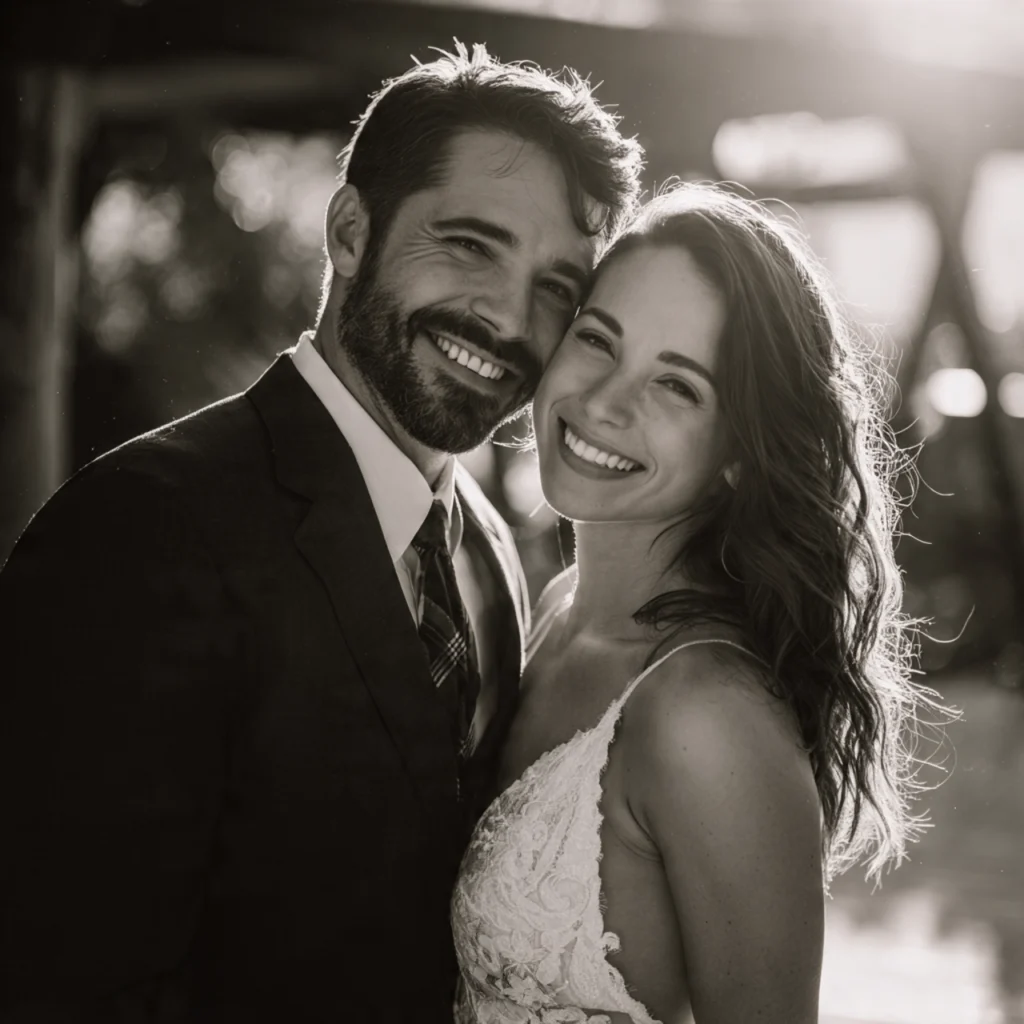
While technically outside the spoken sequence, photos are part of the extended wedding ceremony order. Capturing staged and candid shots ensures the emotions of the ceremony are preserved. Couples often prioritize family portraits and couple shots before joining the reception.
Well-planned photography schedules prevent chaos and allow couples to maximize celebration time. These images become lasting mementos, completing the narrative of the day.
FAQs on Wedding Ceremony Order
What is the typical wedding ceremony order?
The typical wedding ceremony order includes guest seating, processional, vows, exchange of rings, pronouncement, first kiss, and recessional, followed by transition to reception.
Can I change the traditional wedding ceremony order?
Yes, the wedding ceremony order can be customized. Couples often add personal rituals, change the sequence of events, or incorporate cultural traditions to reflect their personalities.
How long should a wedding ceremony order last?
On average, a wedding ceremony order lasts 20–40 minutes. Religious ceremonies may be longer, while non-traditional ones can be shorter, depending on included elements.
Do I need a unity ceremony in the wedding ceremony order?
No, the unity ceremony is optional. Some couples include it for symbolism, while others prefer a straightforward flow with vows and rings only.
When should music be played in the wedding ceremony order?
Music is typically played during guest seating, processional, bride’s entrance, unity ceremony, recessional, and couple’s exit. Each piece highlights a key transition in the flow.
Conclusion
Designing the perfect Wedding Ceremony Order blends tradition with creativity. From the first notes of music to the joyful exit, each step carries emotional weight and meaning. Couples can follow classic structures or reimagine them to reflect their story, values, and culture.
Ultimately, the wedding ceremony order provides more than logistics—it creates rhythm, builds anticipation, and frames the memories of the day. Thoughtful sequencing ensures not just a smooth event, but an unforgettable celebration of love.






